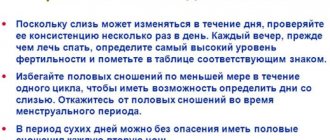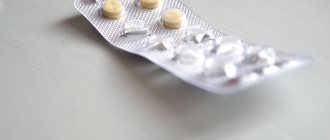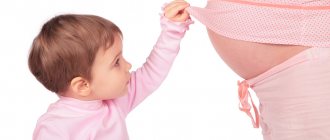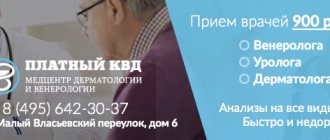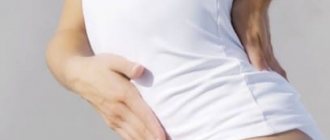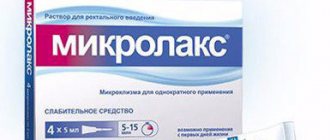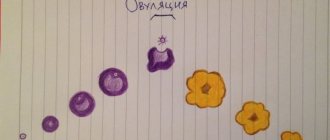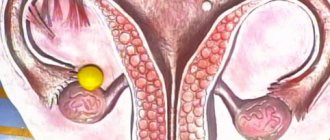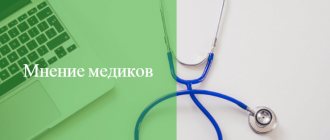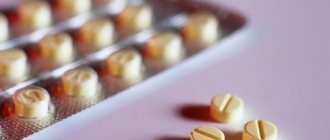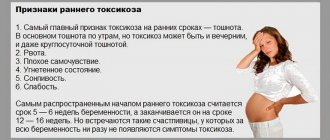Ovulation is a stage in the development of the female reproductive cell that lasts about two days. The egg, leaving the ovary, descends through the fallopian tube towards the uterus, where it awaits fertilization. In the event of fertilization, the cell moves into the uterine cavity and attaches to its wall. This is how pregnancy occurs. The question is very important for couples who want a child.
In the case of normal functioning of the reproductive organs, ovulation occurs approximately once a month and depends on the individual characteristics of the woman. The older the woman, the more the process of cell release from the follicle slows down. Therefore, for many women the question becomes very important: “How to stimulate ovulation?”
Who is indicated for stimulation of egg maturation?
If a woman does not ovulate or occurs extremely rarely, ovulation is stimulated, thanks to which thousands of women become mothers every year.
Medical indications for stimulating ovulation arise in cases where, with regular unprotected sex, a couple has been unable to conceive naturally for more than a year. For couples over 35 years of age, this period is reduced to 6 months.
To obtain results during stimulation, it is important to carry out ultrasound monitoring of follicle development, otherwise the procedure is useless. It makes no sense to stimulate ovulation in case of male infertility.
Carrying out the procedure in the presence of obstruction of the fallopian tubes can lead to an ectopic pregnancy. Therefore, ovulation stimulation should be prescribed only after laparoscopy.
Preliminary examinations and analyzes
To decide on the advisability of ovarian stimulation, a woman must undergo a thorough examination of the body and pass several mandatory tests. Such as:
- blood test for hormones;
- blood test for HIV infection, syphilis and hepatitis;
- take a flora smear and vaginal culture to check for STDs.
You must do a hysteroscopy, electrocardiogram and ultrasound of the mammary glands, pelvic organs and peritoneum, obtain an assessment of the condition and patency of the fallopian tubes, and also undergo a consultation with a therapist and endocrinologist.
Drugs to stimulate ovulation
Let's figure out how to properly stimulate ovulation and what methods exist for this. Before stimulation is prescribed, both spouses are sent for a medical examination.
Klostilbegit
This drug for stimulating ovulation belongs to the group of antiestrogenic drugs.
The principle of its action is based on the inhibition of estrogen production, as a result of which there is an increase in the secretion of luteinizing and follicle-stimulating hormones by the pituitary gland. The active substance that directly stimulates ovulation is clomiphene citrate. One tablet contains 50 mg of clomiphene.
Successful stimulation of ovulation with clostilbegit is possible if the doctor draws up the most competent protocol for the procedure.
That is, taking medications, taking tests, conducting examinations according to a specific schedule, taking into account the age and individual characteristics of the couple. The doctor also takes into account how the egg will be used later: for IVF, ICSI or for natural fertilization.
In the classical regimen, clostilbegit is taken from days 5 to 9 of the menstrual cycle. With additional stimulation of ovulation using puregon, clostilbegit is prescribed from 3 to 7 days.
The period of admission is accompanied by ultrasound monitoring of the follicle maturation process. When the woman reaches 17–18 mm, she takes Pregnil and ovulation occurs within 24–36 hours. According to statistics, about 15% of couples manage to get pregnant after stimulating ovulation on the first try. The duration and cause of infertility and the woman’s age also play a role.
Letrozole
The action of the drug is based on the inhibition of estrogen production by the tissues of the female reproductive system.
The main advantage of this ovarian stimulation drug is the minimal number of reported side effects. Letrozole is produced in the form of tablets, which contain 2.5 mg of active substance.
Letrozole can artificially induce ovulation when used from the 3rd day of the menstrual cycle. The duration and frequency of administration is up to 5 days, 1 tablet per day.
Duphaston
The active substance of this medicine to stimulate ovulation is dydrogesterone.
It has a progestogenic effect, that is, it increases the production and concentration of progesterone in the blood. Progesterone is a hormone that supports pregnancy. Therefore, its use in the ovulation stimulation cycle begins when ovulation is confirmed by ultrasound results. This happens approximately on days 14–16 of the menstrual cycle.
On average, 1–2 tablets are prescribed 2 times a day. The treatment is long-term, at least until pregnancy is confirmed. The withdrawal of the drug occurs gradually.
Ovariamine
The drug is not a medicinal product, but a dietary supplement.
However, Ovariamin tablets are often prescribed to women to support the ovaries while stimulating ovulation. The dietary supplement contains a complex of polypeptides and nucleic acids obtained from the ovaries of cattle.
Ovariamin is often prescribed before the start of the ovarian stimulation cycle. Use ends when pregnancy is confirmed.
Cyclodinone
This drug affects the female reproductive system as a whole and regulates the production of sex hormones.
Under its influence, the level of follicle-stimulating hormone normalizes. Cyclodinone is prescribed in the second half of the ovarian stimulation cycle. After ovulation occurs, the formation of the corpus luteum begins in the ovary. The drug helps maintain the functioning of this formation, which is responsible for the success of the onset and development of pregnancy.
Stimulation using traditional methods
Many women consider the “natural” option of stimulation more preferable - taking medicinal herbs. Take boron uterus, red brush leaves and sage to stimulate ovulation, which are freely sold in every pharmacy. For egg maturation, take 1 table 3-4 times a day. spoon for one glass of boiling water of sage infusion in the first half of the new cycle.
Ovarian stimulation for pregnancy planning - Reviews
Alina I am diagnosed with polycystic disease. But I persuaded the doctor to help us and took Duphaston for two months, and Clostilbegit for the third month. And in the same cycle I became pregnant.
Elena Pregnancy began when they started injecting Gonal. I won’t say anything, it’s a good drug, although expensive.
Nadezhda During the seven years I waited for my son, I was stimulated more than five times. Much. And there were no health consequences, everything worked out. The main thing is to find a competent doctor.
Natalya Don’t rely on other people’s results. It all depends on your body. And a good doctor will make you take all the tests you need. And cell growth will be monitored almost every day, and medications and doses will be carefully selected.
Inna Stimulated by Gonal-F and a miracle! From the very first stimulation, ovulation and pregnancy occurred. We are almost two trimesters, we have arms and legs! Good luck, girls!
How ovulation is stimulated: main stages
If clostilbegit is chosen for stimulation, then its administration begins on the 5th day and ends on the 9th. When choosing Menogone or Puregon for stimulation, the intake begins already on the 2nd day of the cycle and ends somewhere after 10, the exact date is determined by the doctor based on observations of the stimulation process.
The start date and duration of the stimulation procedure depends on the condition of the patient’s ovaries and uterus and is determined directly by the attending physician in each case individually. The first ultrasound, performed a few days after the start of the stimulation procedure, is followed by a subsequent ultrasound two to three days later.
Observation is carried out until the follicles reach a size of 20-25 mm. To prevent regression of the follicles and eliminate the possibility of the formation of follicular cysts, an hCG injection is prescribed at this stage. The dose selected by the doctor helps to “start” the ovulation process.
If the process is favorable, ovulation begins 24–36 hours after the prescribed hCG injection. After confirming this with an ultrasound examination, injections of progesterone or utrogestan are prescribed for additional “support” of the corpus luteum of the ovaries. According to patient reviews, stimulation of ovulation with clostilbegit most often leads to conception.
Taking into account the male factor, the doctor prescribes specific timing and frequency of sexual intercourse and insemination during stimulation. If the spermogram is good, then after the hCG injection, sexual intercourse should be daily or every other day until the end of ovulation and the formation of the corpus luteum.
If the use of clostilbegit does not cause ovulation or follicular growth, then after the third unsuccessful course it is recommended to reconsider the treatment methods and conduct additional examination.
Important : it is not recommended to use clostilbegit more than 6 times. Abuse of the drug can cause depletion of the ovaries and cause “early menopause.” And this will jeopardize further attempts to treat infertility using one’s own eggs.
With this outcome, you will have to be content with IVF with a donor egg. Being a drug with a pronounced anti-estrogenic effect, it is better not to take clostilbegit if there is a problem with endometrial growth.
Before carrying out treatment procedures and diagnostics, you should make sure that there are no acute inflammatory processes, which are a contraindication, since they carry the risk of a deterioration in the patient’s general condition.
In the middle of the menstrual cycle, the ovary of a healthy woman releases an egg from the follicle into the abdominal cavity. If this natural process is disrupted, ovulation is stimulated using special medications - ovulation inducers. One of the most commonly used drugs to stimulate ovulation is Clostilbegit.
Stimulation of ovulation by gonal and menopur replenishes the endocrine gland of the pituitary gland with hormones and controls the process of follicle maturation and the onset of ovulation in a woman’s body. Available in the form of injections, injections are prescribed to stimulate ovulation intramuscularly or administered subcutaneously. The ovulation stimulation scheme is drawn up based on the established type of ovulation disorder and the period during which the disorder is observed.
Ultrasound monitoring during this period allows you to avoid the growth of several follicles at the same time. Each examination is accompanied by counting the number of growing follicles, measuring their diameter and determining the thickness of the uterine mucosa.
When the diameter of the leading follicle reaches at least 17 millimeters, Pregnil comes into effect, causing the egg to release from the follicle. Depending on the specific type of marital infertility, intrauterine insemination is performed with the sperm of a donor or husband, or sexual intercourse is performed.
Stimulating ovulation with gonal has a positive effect, confirmed by reviews of women who have successfully become pregnant and will soon celebrate the main event in their lives.
The following medical examinations should precede ovulation stimulation:
- HIV;
- Syphilis;
- Hepatitis B and C;
- Ultrasound of the mammary glands;
- Smear (woman);
- Oncocytology smear (woman); Cultures to detect chlamydia, candida, trichomonas, ureaplasma, gardnerella, mycoplasma;
- Patency of the fallopian tubes;
A prerequisite is a physician’s conclusion about the woman’s ability to bear a pregnancy.
The blood is tested for the presence of antibodies, and therefore immunity to rubella. Patency of the fallopian tubes is one of the important conditions for pregnancy; fertilization occurs here.
Several methods are used to assess patency:
- Laparoscopy;
- Metrosalpingography;
- Transvaginal hydrolaparoscopy.
The assessment method is selected by the attending physician based on the available indications. If inflammation or trauma to the uterine mucosa or intrauterine device is detected, hysteroscopy of the uterine cavity is performed.
Lack of ovulation can cause:
- Hormonal imbalance, which may be caused by stopping taking contraceptives. The body will need some time to fully restore its functions. This may take several months.
- Intense sports, illness, stress and others, physical and serious psychological stress.
- Excessive thinness and lack of fat tissue.
- Clinical causes such as polycystic ovary syndrome and pituitary dysfunction.
Stimulation of ovulation is one of the most common methods in the treatment of infertility. Before the procedure begins, a preliminary examination of the ovaries is carried out to identify possible contraindications to stimulation.
As a result of the study, preliminary estrogen therapy may be prescribed or the necessary ovulation stimulation scheme and dosage necessary to create optimal conditions and achieve a successful attempt can be built.
With multifollicular ovaries, stimulation of ovulation can lead to multiple pregnancies. This is explained by the fact that several enlarged follicles are formed in the ovaries at the same time. Ovaries with many follicles can be observed on ultrasound at other periods of the cycle.
The development of follicles may be delayed when taking hormonal contraceptives, during breastfeeding, during adolescence, during sudden weight loss, obesity, thyroid dysfunction and other endocrine diseases. Pregnancy with such ovaries is quite compatible and will proceed normally in the absence of other disorders.
Some patients identify multifollicular ovaries with the concept of polycystic ovary syndrome. However, the main difference between multifollicular ovaries and polycystic ovaries is the normal volume of the ovary.
The number of follicles does not exceed 7-8, the diameter is 4-10 mm, and the content of LH and FSH, insulin, and testosterone in the blood is within normal limits. Thus, the diagnosis of multifollicular ovaries cannot be considered a disease. Rather, it is a specific condition that is not the cause of infertility, irregular menstrual cycle, etc.
With polycystic ovary syndrome, testosterone and insulin levels are increased. The volume of the ovaries is almost twice as large, the ovarian capsule is thickened. Stimulation of ovulation in polycystic disease includes hormone therapy, which reduces the level of male hormones. Already within the first months after prescribing the drug, the result is noticeable. Ovulation stimulating drugs include clomiphene citrate and metformin.
The problem of infertility is a common problem for married couples. In half of the cases, the reason lies in male infertility. That is why the examination is prescribed to both spouses. For examination, men undergo a spermogram, which is carried out after 3-5 days of abstinence.
Carefully! Contraindications
Unfortunately, it also happens that the method of ovarian stimulation for the purpose of conception is contraindicated for a woman. Contraindications are divided into two types: relative and absolute.
Absolute contraindications to ovarian stimulation include the following:
- restrictions due to age;
- gene and chromosomal abnormalities;
- poor patency of the fallopian tubes;
- various chronic and hereditary diseases.
Relative contraindications are considered to be:
- the presence of inflammatory processes in the female reproductive system;
- obstruction of one fallopian tube in the absence of any pathological changes in the second;
- existing sexually transmitted diseases;
- swelling of the ovaries, including as a result of hyperstimulation.
Another reason for prohibiting the use of this technique may be the patient’s individual intolerance to the drugs used for stimulation. Polycystic or multifollicular ovaries are also
strictly prohibited for ovarian stimulation And, of course, this procedure loses its meaning if the partner is infertile.
Stimulation of ovulation during IVF
IVF (In Vitro Fertilization) took place for the first time in 1978 in England. The method is used for infertility caused by problems of the fallopian tubes, ovulation, and sperm quality. IVF is used to conceive a child in women over 45 years of age.
The method involves fertilizing an egg outside the woman’s body and then placing the embryo in the uterus. Of course, the price of the IVF method of stimulating ovulation is the highest compared to other methods.
The main indications for IVF are defects or absence of fallopian tubes. In vitro fertilization is recommended if there is an insufficient number or complete absence of sperm in the male seminal fluid.
Between the 19th and 23rd day of the menstrual cycle, a drug is administered to prepare the woman’s body for hormonal stimulation. Next, the follicles are stimulated under constant ultrasound control. Once the follicles reach the desired size, a puncture is performed and the egg is sent for fertilization. The embryo is transferred to the uterus after a few days, and a pregnancy test is performed two weeks later.
To minimize possible risks, a comprehensive examination is carried out before IVF treatment.
The main risks of the IVF procedure:
- allergic reactions;
- ovarian hyperstimulation syndrome;
- ectopic pregnancy.
The drug Clostilbegit is prescribed to stimulate ovulation in women and in men for the treatment of oligospermia. Those who stimulated ovulation with clostilbegit confirm that the drug promotes increased production of hormones in the pituitary gland and hypothalamus, after which in women the functioning of the ovaries is stabilized and causes the maturation of the follicles.
Stimulation of ovulation at home
At home, you can experiment with aromatherapy using herbal oils of anise, cypress, basil, and sage to stimulate ovulation. When bathing, adding 3-5 drops of rose geranium and lavender oils to the bath will help normalize hormonal levels. Such ovulation stimulation will be less expensive than treatment with ovulation-stimulating pills.
Stimulation of ovulation must certainly be carried out under the qualified supervision of a doctor and be based solely on medical indications. The consequences of improper ovulation stimulation can be extremely complex. An incorrect dose of drugs or neglect of examination can cause irreparable harm to the female body.
Improper stimulation can result in ovarian rupture or lead to early exhaustion. At home, you should include in your diet foods that stimulate ovulation: grains, quail eggs, dairy products, vegetables and fruits, seeds (flax, sesame, pumpkin). Reviews of women who have undergone ovulation stimulation can be read on numerous forums.
Psycho-emotional reasons why there is no ovulation
Many girls and women carry with them from childhood unforgiven grievances, childhood complexes that appeared in them due to incorrect criticism in the family or at school. An unstable economic and political situation, terrorist attacks, military actions - cause fear for your life and the lives of loved ones. It is imperative to work with unforgiven grievances, fears and other mental traumas of children and adults, especially if there are problems with ovulation. These problems need to be recognized, accepted that they exist, and worked on them independently or with the help of a psychologist. As for general problems, you should not take on your shoulders what you cannot change. You need to accept that the world is imperfect, but life goes on, and you have the right to the happiness of motherhood.
Obsession with ovulation, pregnancy and children negatively affects a woman's ability to conceive
It’s important to know : you shouldn’t constantly think about conceiving a baby. When this idea becomes obsessive, it can put a woman into a state of stress, create a fear of failure and reduce the likelihood of the desired conception. Although writing is much easier than doing - you need to keep yourself busy, get carried away!
This article is entirely devoted to the technique of getting rid of obsessive thinking - how to stop thinking about pregnancy all the time.
You can learn to “neutralize” stress, and above all, master relaxation techniques and proper breathing. When the body is relaxed, the blood is saturated with sufficient oxygen, and it is easier for the body to endure psychological and physical stress.
Methods of psychological healing and relaxation for women planning pregnancy:
- refusal to watch news, detective stories and thrillers;
- light health-improving sports;
- rhythmic dancing classes, stretching exercises;
- yoga, meditation, relaxation, breathing practices;
- relaxing massage with essential flower oils;
- regular active recreation in nature, walks in the park;
- doing what you love and inspiring creativity;
- change of usual environment, trips to other cities.
Traveling to new places and countries also helps to conceive a child.
Doctors have repeatedly noted that during joint vacation trips, many women had good ovulation. They successfully conceived a baby when they were in a peaceful environment, away from the usual city stress and problems.
Who is it for?
Stimulation of ovulation should be carried out exclusively for medical reasons. Doing this on your own is dangerous; you can cause irreparable harm to your body.
Indications for induction are:
dysfunction of the gonads (with polycystic ovary syndrome, with age-related and toxic dysfunction of the glands);
hormonal imbalance, in which a woman’s reproductive functions are impaired (with high FSH, low estrogen levels, low AMH);
absence of ovulation (according to the results of examination and folliculometry for the last 3 menstrual cycles);
absence of pregnancy with active planning for a year if the woman is over 35 years old, and for six months if the woman is under 35 years old;
menstrual irregularities (amenorrhea due to hypothalamic-pituitary insufficiency);
entering into an in vitro fertilization (IVF) treatment protocol, where it is important to obtain not just ovulation, but hyperovulation with the maturation of a large number of follicles in order to increase the chances of successful IVF;
preparation for artificial insemination;
regular repetition of “late ovulation” in women;
severe obesity or, conversely, exhaustion, since in such situations it is very difficult to get pregnant on your own in a natural cycle.
Stimulation is not performed on women over 40 years of age (not a strict contraindication, which should be considered individually). Stimulation of ovulation is strictly prohibited if a woman has obstruction of the fallopian tubes in order to avoid the development of an ectopic pregnancy. Contraindications also include various inflammatory diseases of the ovaries and uterus, tubes, as well as their absence.
How family relationships affect the frequency and timing of ovulation
Men who dream of an heir should be reminded: her women’s health and ability to conceive depend on how comfortable a woman is in her family. Poor material and living conditions, inattentive and sometimes rude treatment on the part of the husband can force a woman’s body to “slow down” ovulation. A man's lies and infidelity are especially hard on him.
Poor family relationships inhibit ovulation
Probably, nature is interested in the expectant mother having a reliable defender of herself and her children nearby. Therefore, before blaming his wife for not being able to get pregnant, the spouse should ask himself honestly whether he is worthy of being a real father and husband.
Help from a psychotherapist
The help of an experienced specialist is needed if the situation in the family or at work is very difficult, and all attempts to normalize one’s psychological state are unsuccessful. In some cases, it may be helpful for both spouses to see a therapist.
During the consultation, the doctor will not only listen and prescribe medication treatment, but will also give advice on how to overcome an internal crisis and teach techniques for working with stress. If indicated, he may prescribe hypnosis and psychotherapy sessions.
Positive affirmations for successful fertilization after ovulation
There are positive psychological attitudes that will help successful conception and improve health:
- I live in Peace and Security.
- The universe loves and protects me.
- My body is a temple of Health, Love and Light.
- I receive only Goodness, Love and Happiness.
- I can create New Life in my body.
- I have regular and full ovulation.
- I am protected by the Creator and Guardian Angels.
- Prosperity, Love and Joy are always with me.
- I forgive everyone and myself, I leave my past.
- I get pregnant quickly and easily and successfully give birth to healthy children!
In the old days, folk healers helped young women get pregnant with the help of healing herbal drinks and spells that attuned the body to a connection with nature and instilled faith in a successful pregnancy, which played a very important role. Modern girls sometimes lack the feeling of this deep connection with the nature of the Earth, therefore, in addition to the methods of traditional medicine, you can also use folk methods to conceive a baby.
